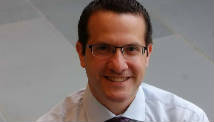PARIS: Tens of thousands are set to march in Paris on Sunday to denounce government plans to legalise same-sex marriage and adoption which have angered many Catholics and Muslims, France's two main faiths.
Leading the charge is sassy phenomenon Frigide Barjot, whose real name is Virginie Tellenne and who has carved a career by creating a bizarre persona and cocking a snook at the establishment.
Her assumed name -- a play on the name of French film star Brigitte Bardot, a sex symbol in the 1960s -- translates as Frigid Loony.
Barjot has become a rallying symbol for the "March for All", articulating the feelings of many of those opposed to the government initiative.
"One cannot say that a child is born from two women," she says -- an argument espoused by opponents to the legislation in a country which is officially a secular republic but overwhelmingly Catholic.
The French parliament is to debate the bill -- one of the key electoral pledges of Socialist President Francois Hollande -- at the end of this month.
Preparations for the rally have gathered pace. Protesters across the country have hired as many as 90 coaches and five high-speed trains to head to Paris. They say they have distributed 4.5 million leaflets championing their cause.
There will be three different marches across the city which will converge near the Eiffel Tower.
Barjot said on Saturday she was expecting "between 200,000 and 300,000 people."
The march comes a day after France ordered tightened security in public buildings and transport as well as in places with large public gatherings after military action against radical Islamists in Mali and Somalia and threats of reprisals by the extremists.
A poll published Friday showed that 52 per cent of the French backed gay marriage but an equal number opposed same-sex adoption.
The head of the French Roman Catholic Church, Cardinal Andre Vingt-Trois, who has been vocal in his opposition of gay marriage, will not attend the protest. Nor will the chief rabbi Gilles Bernheim and Muslim Council head Mohammed Moussaoui take part in the street protests.
Far-right leader Marine Le Pen will also not be attending. Her National Front party is divided over the issue and has authorised those wanting to take part to do so despite officially taking the line that it was not backing the march.
Marchers have been instructed in leaflets not to react to provocation and told to "keep smiling in the face of invective ... seek discussion and if that fails, turn to the forces of law and order."
The controversy over the highly divisive issue gained momentum after the education minister asked Catholic schools to drop a plan to discuss the bill in schools, evoking France's traditional line of separation of the Church and the state.
French Muslim groups are joining in the opposition. The call has been led by the influential Union of French Islamic Organisations (UOIF) which urged co-religionists to join the march.
"This bill, if it passes, will disrupt family and social structures and civil law dangerously and irreparably," it said.
An earlier protest march on November 17 drew more than 100,000 people across France, with some 70,000 rallying in Paris alone.
Justice Minister Christiane Taubira has said the government will stick to the project, irrespective of the magnitude of the protest and has rejected calls for a referendum on the issue.
- AFP/ck











